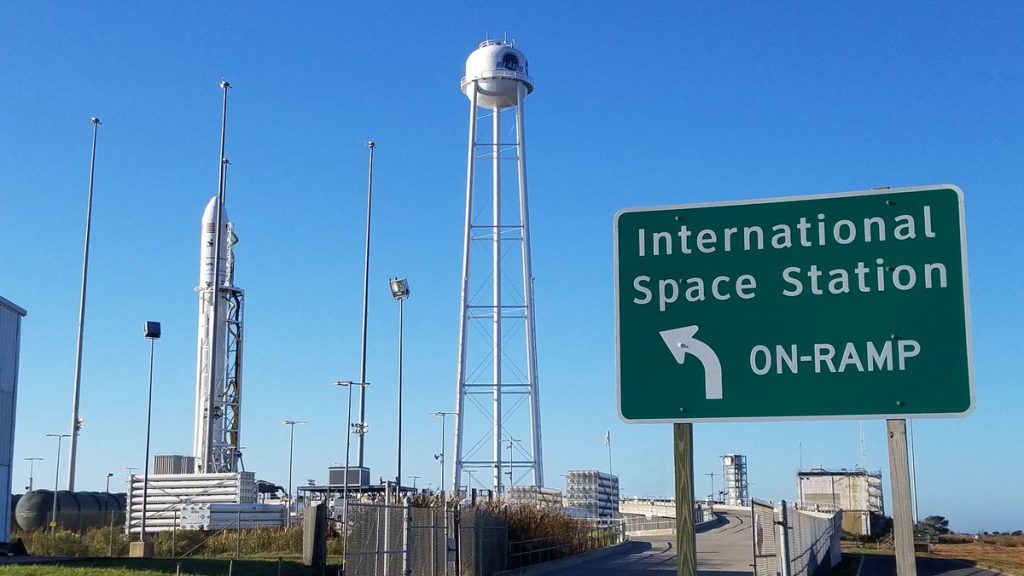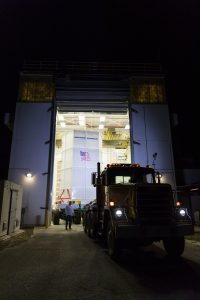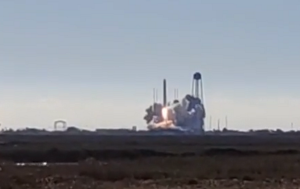
After being delayed by a few weeks to allow for another spacecraft docked at the International Space Station (ISS) to leave, Northrop Grumman had a perfect rocket launch this morning from NASA’s Wallops Flight Facility on the Virginia Coast, treating those peering into the sky from New York to North Carolina across the heavily populated Mid Atlantic region with a view of the ISS-bound craft. Launched at 9:59am, the Cygnus cargo craft separated from the Antares rocket on its journey into space; hours after launch, it successfully deployed it’s solar panels and is now en route to the ISS. On Monday, November 4, Cygnus is due to rendezvous with the ISS; at that time, astronauts onboard the space station will use a robotic arm to grapple Cygnus and dock it to the station so that supplies can be unloaded.
Today’s picture-perfect launch was made possible by Northrop Grumman’s Antares rocket. Designed to provide responsive and low-cost access to space, Antares is a two-stage vehicle that provides low-Earth orbit (LEO) launch capability for payloads weighing up to 8,000 kg. Internally funded by Orbital ATK, Antares completed a risk reduction mission and a demonstration of commercial re-supply services for the ISS under a NASA Commercial Orbital Transportation Services (COTS) agreement in 2013. Orbital ATK commenced delivery of cargo to the ISS under the NASA Commercial Resupply Services (CRS) contract in 2014. Orbital ATK was acquired by Northrop Grumman in 2018.
On top of Antares today was the Cygnus spacecraft which consists of two modules: the Service Module (SM) which incorporates the avionics, propulsion and power systems from Orbital ATK’s LEOStar and GEOStar spacecraft buses; and the Pressurized Cargo Module (PCM) which carries the crew supplies, spares and scientific experiments. The SM is integrated and tested at Northrop Grumman’s Dulles, Virginia satellite manufacturing facility. The PCM is supplied by Thales Alenia Space and is produced in Turin Italy.

The Cygnus spacecraft will bring the AstroRad Vest, a Zero-G Oven, and the Made in Space Recycler to the ISS.
The AstroRad Vest tests a special vest designed to protect astronauts from radiation caused by unpredictable solar particle events. Astronauts will provide input on the garment as they wear it while performing daily tasks, including how easy it is to put on, how it fits and feels, and the range of motion it allows. Garment developers can use this input to improve design. Use of the vest could protect crew members on missions to the Moon and Mars.
The Zero-G Oven examines heat transfer properties and the process of baking food in microgravity. It uses an oven designed specifically for use aboard the space station, and may have application on future long-duration missions by offering a way to increase variety in flavor and nutrition of food for crew members. The first thing to be baked in the oven will be chocolate chip cookies provided by DoubleTree Hotels.

The Made in Space Recycler will test systems needed to reprocess plastic into 3D printing filament that can then be transferred for use to the Made in Space Manufacturing Device, a 3D printer that has operated on the orbiting laboratory since 2016. This has implications for space conservation and deep space missions.
Another Antares rocket is being readied for launch now inside the NASA Wallops Flight Facility. Known as the NG-13 mission, that is tentatively scheduled to lift-off from the Virginia coast in February 2020.